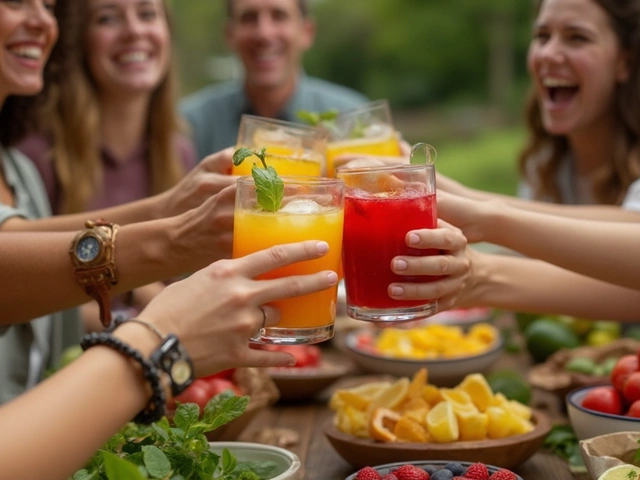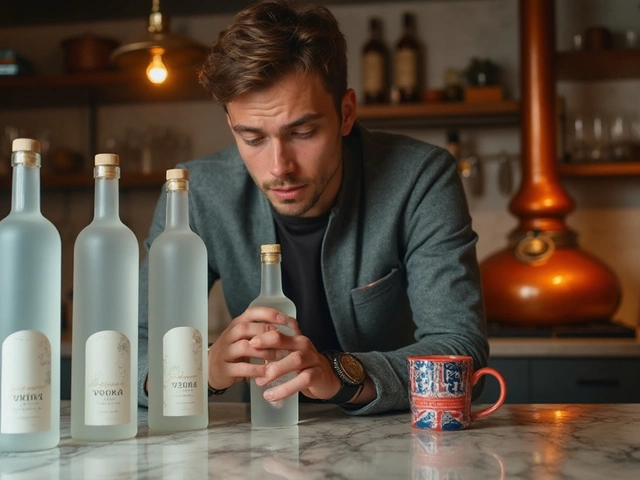Drink Nutrition: How to Choose Healthy Beverages
If you love a good drink but worry about the waistline, you’re not alone. Most of us think booze is either all‑out junk or a rare treat, but the truth sits somewhere in the middle. Understanding the nutrition behind wine, spirits, and mocktails can help you enjoy a sip without the guilt.
Low‑Calorie Spirits and Vodka
Vodka often gets a bad rap because it’s the base of many sugary cocktails. The good news? Pure vodka on its own is surprisingly low in calories—about 64 kcal per 1 oz (30 ml) shot. What matters most is the proof: the higher the alcohol % you’re looking at a few extra calories. When you compare cheap and premium brands, the price tag rarely reflects nutrition. A higher‑priced vodka might taste smoother, but it doesn’t magically cut calories.
If you want to keep the calorie count down, skip the mixers that are loaded with sugar. Club soda, a splash of fresh citrus, or a few cucumber slices add flavor without the hidden carbs. Want a bit of sweetness? A dash of zero‑calorie stevia syrup works better than a store‑bought pre‑made mixer.
Nutritious Mocktails and Non‑Alcoholic Options
Mocktails have exploded in popularity, and for a good reason. They let you enjoy a festive drink without the alcohol punch. The key to a healthy mocktail is focusing on fresh ingredients: fruit juice, herbs, and low‑sugar sparkling water. For example, blend fresh berries with a splash of lime and top with sparkling water for a refreshing, antioxidant‑rich beverage under 50 kcal.
Watch out for “healthy” labels that hide sugar. Many store‑bought non‑alcoholic drinks add up to the same sugar load as a soda. When you make them at home, you control the amount of sweetener. Even a teaspoon of honey can add 21 kcal, so measure carefully if you’re counting.
Another simple idea: brew a strong tea, chill it, and use it as a mocktail base. Tea is low in calories and packed with polyphenols that can boost metabolism. Add a sprig of mint and a slice of orange for a flavor boost without extra sugar.
Beyond mocktails, think about what you drink before a wine tasting or a whiskey session. A light, neutral palate cleanser—like plain water or a small glass of sparkling water with a twist of lemon—keeps your taste buds sharp and prevents you from over‑indulging later.
Reading nutrition labels is a habit that pays off. Look for “total carbohydrates” and “sugars” to spot hidden calories. Some ready‑to‑drink cocktails list up to 30 g of sugar per can, which is more than a soda. Swapping those for a homemade version can shave off a whopping 100 kcal per serving.
Portion control is another simple trick. A standard wine glass is 5 oz (150 ml), not the oversized “wine goblet” you might see at a party. Stick to that size, and you’ll keep the calorie intake around 120 kcal for a 12% ABV wine.
Finally, pair your drinks with smart food choices. A handful of nuts or a piece of fruit balances the blood‑sugar spike from a sweet cocktail and keeps you fuller longer. It’s the same principle you use with dinner—balance carbs, protein, and a bit of fat.
Bottom line: you don’t have to ditch your favorite drink to stay healthy. Choose low‑calorie spirits, skip sugary mixers, craft mocktails with fresh ingredients, and keep an eye on portion sizes. With a few easy swaps, you’ll enjoy great flavor and keep your nutrition goals on track.
Find out which non-alcoholic drink tops the charts for health, with science-backed facts, tips, and surprising details for your daily wellness.
View Details

